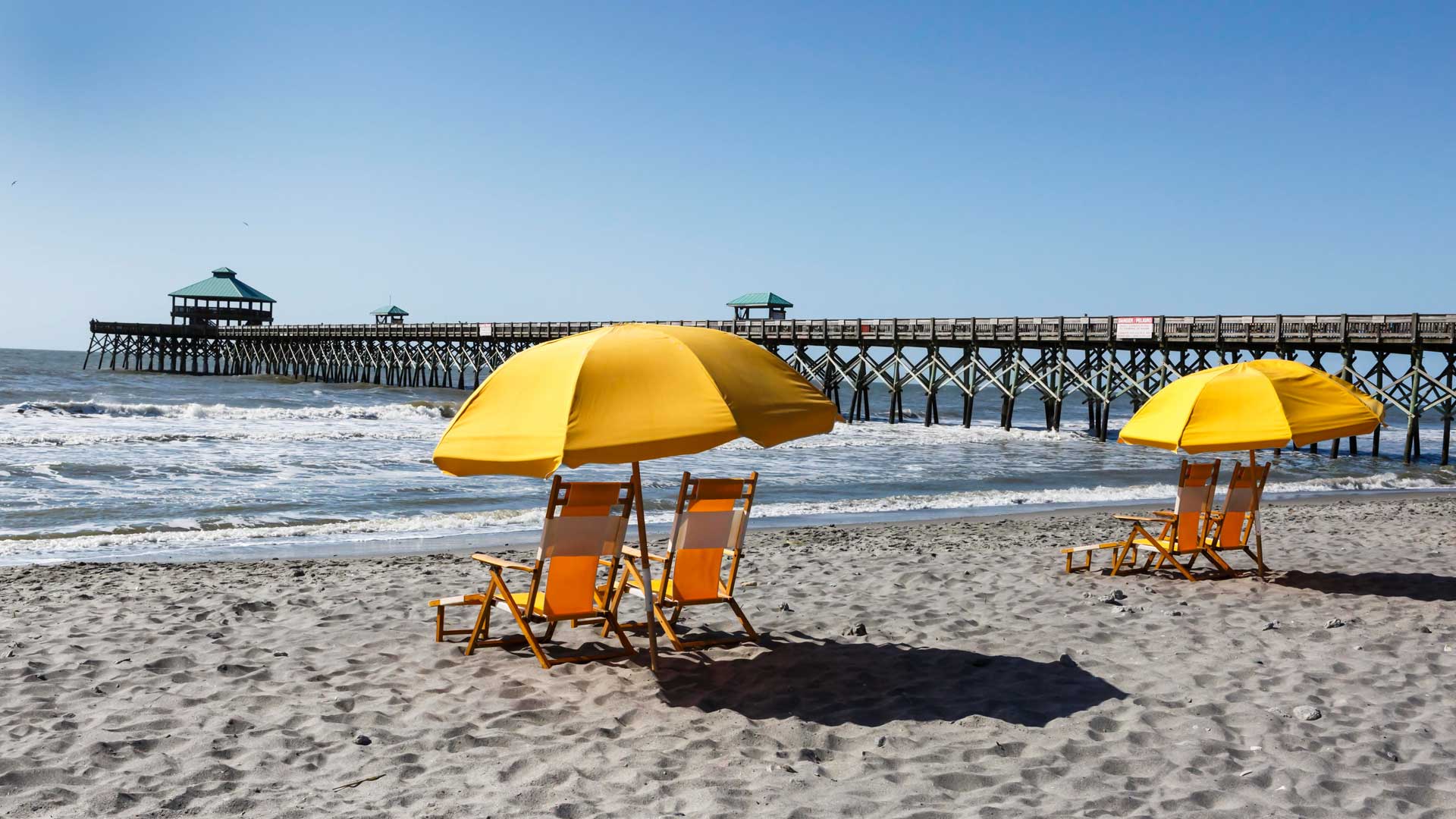The price of preservation

When your classroom is a beach, taking a course in the summer becomes significantly more enticing. But the seven Furman students who took the Ecological Economics May Experience (May X) class weren’t there for surfing lessons.
John Quinn, Ph.D. (biology) and Melanie Cozad, Ph.D. (economics) led the class which included a three-day trip to the South Carolina coast where students surveyed residents and tourists at Folly Beach to see how much they would be willing to spend to add 20 feet of sand to the shoreline. They also toured the natural ecosystem of Bull’s Island and extrapolated their results to Sullivans Island. Closer to home, they visited the Blue Wall area of Greenville County and used prior research to determine how much people would be willing to spend to increase the 7 percent of the county’s protected forestlands by another 5 percent.
“We were interested in helping the students understand how nature is valued and the benefits that nature provides, such as pollination of crops, food production, climate change mitigation, and recreation,” said Dr. Quinn. “We wanted to see how much people are willing to pay for change.”
He said the class struggled with the gray areas when looking at the value of natural resources, an important lesson for their future careers. They realized they didn’t have enough information to make some decisions that need to be made about the benefits and costs of certain actions that impact the state’s natural resources.
The students presented their findings on posters at FurmanEngaged! and in discussions with other students, Furman faculty, government officials, and representatives of the Nature Conservancy. They also wrote letters outlining their research and conclusions to the editors of newspapers and government officials and wrote op-ed pieces for newspapers.
Sustainability science and health sciences major Hagan Capnerhurst ’17 wrote the mayor of Folly Beach about the erosion of marshland that is home to the endangered least terns and piping plovers.
Explaining the research, biology major Trey Bergsma ’17 said, “We ran a cost-benefit analysis to find out if it would be profitable to expand the shoreline by 20 feet.”
The students determined that coastal users would be willing to pay $6.17 million to expand nearly 348 feet of shoreline by adding 20 more feet of sand, he said. “Moving sand is a difficult process.”
Students concluded that expanding the shoreline would make sense if done over time.
“It is doable. It will take some time. We have to be careful when we do it, “said Jose Bailey ’17, a political science and urban studies major.
And in Greenville County, students learned that there are 35,000 acres of protected forest which make up 7 percent of the county’s land. “We have lost a lot of forest cover since 1993,” said Bailey.
To increase protected forests by 1,750 acres would take about 5.29 years and cost about $35 million.
But students looked only at purchasing land for protected forests because the use of conservation easements, which also protect land, is more nebulous and difficult to put a monetary value on.
Expanding either the sand on the shore or forestland has costs as well as benefits, the students discovered.
Expanding the shoreline could cause shallow-water reefs to be hurt, storm damage to increase, native habitat to be degraded, and wildlife and invertebrate to be affected negatively.
“There are lots of reefs out in the ocean,” Bergsma said, “IF you take the sand, you’re losing the reef. The property values will go up, but the value of life will go down. And expanding forestlands could cause a loss in logging profits, dampen fire mitigation, and worsen drought conditions, but the consequences of both types of expansion would outweigh the benefits.”
“Coastal ecosystems are globally the most valuable,” Quinn said. But “without either one—the coast or the forests, we’re lost.”
This May X course provided students with two sets of tools, ecological and economic. They learned to work across disciplines, design a novel research question, and communicate their findings to a broad audience.
“I learned to translate the value of what I wanted to do to a dollar value. I had never done anything like this before,” said Bergsma.
“I think it teaches them how to take what they’re good at and have meaningful discussions with people outside their disciplines,” Cozad said. “Students were able to see where their disciplines fit into the real world.”
Also, the students learned that interdisciplinary projects help present actions they may want to take, Quinn said. An economist and an ecologist could look at the same project and come up with different values. But if they work together, they can present it from both viewpoints and give it relevance to a great number of stakeholders.
Learn more about Furman’s May Experience program.